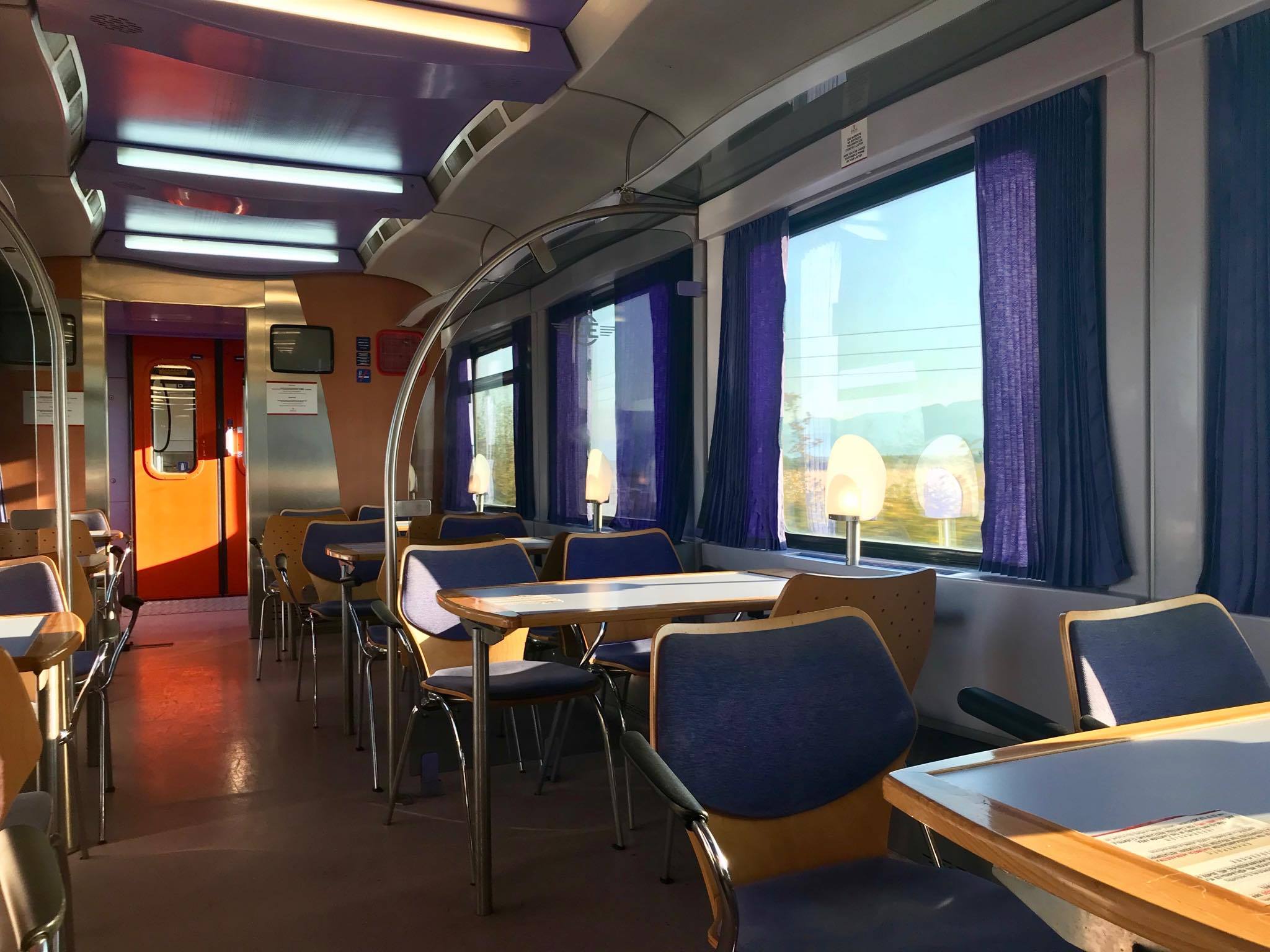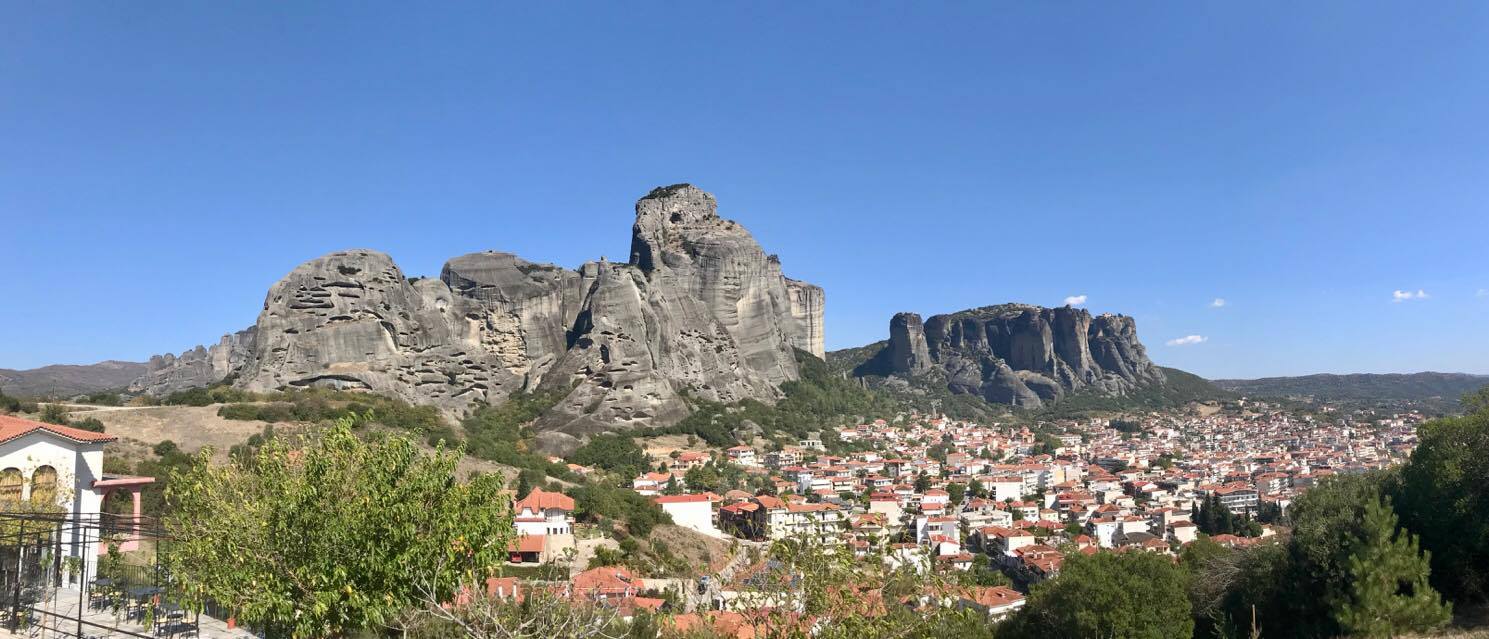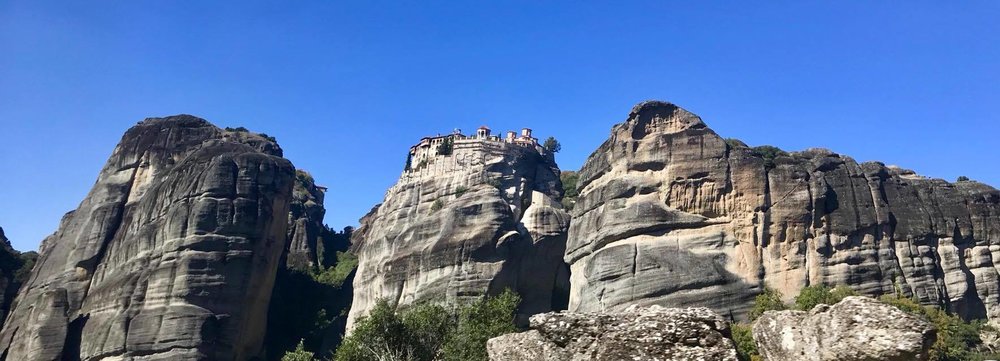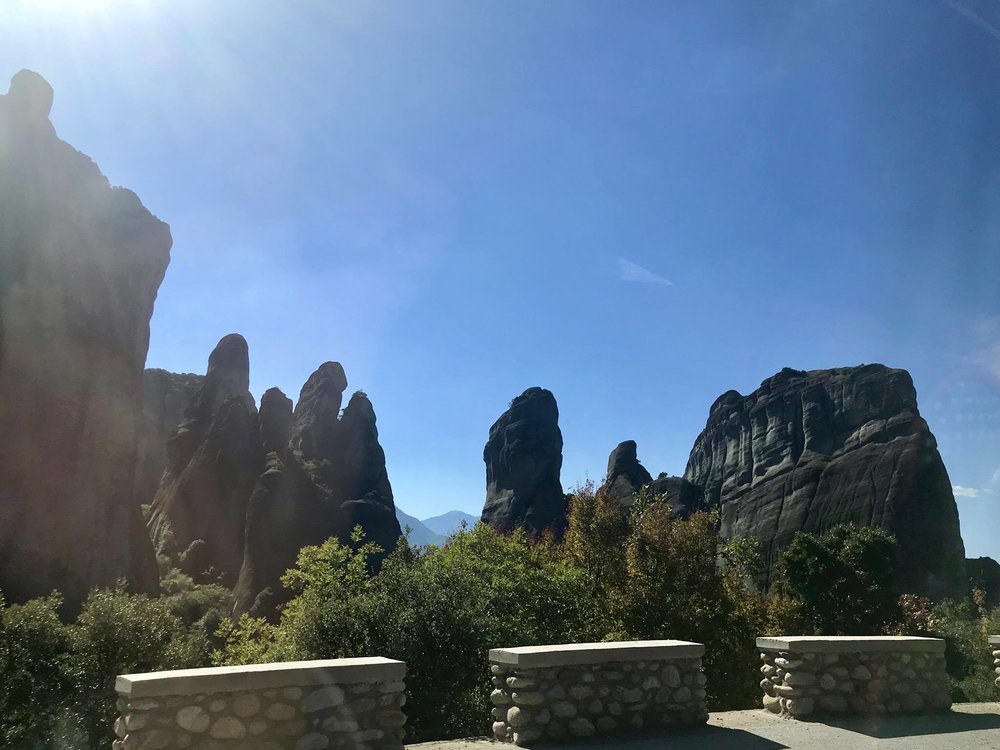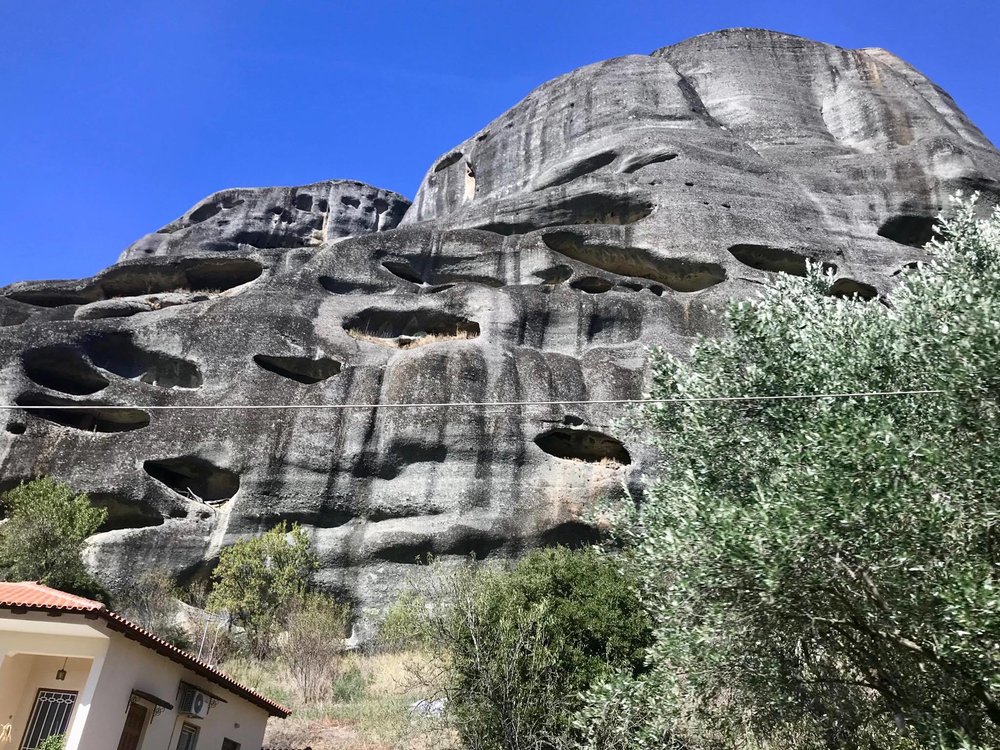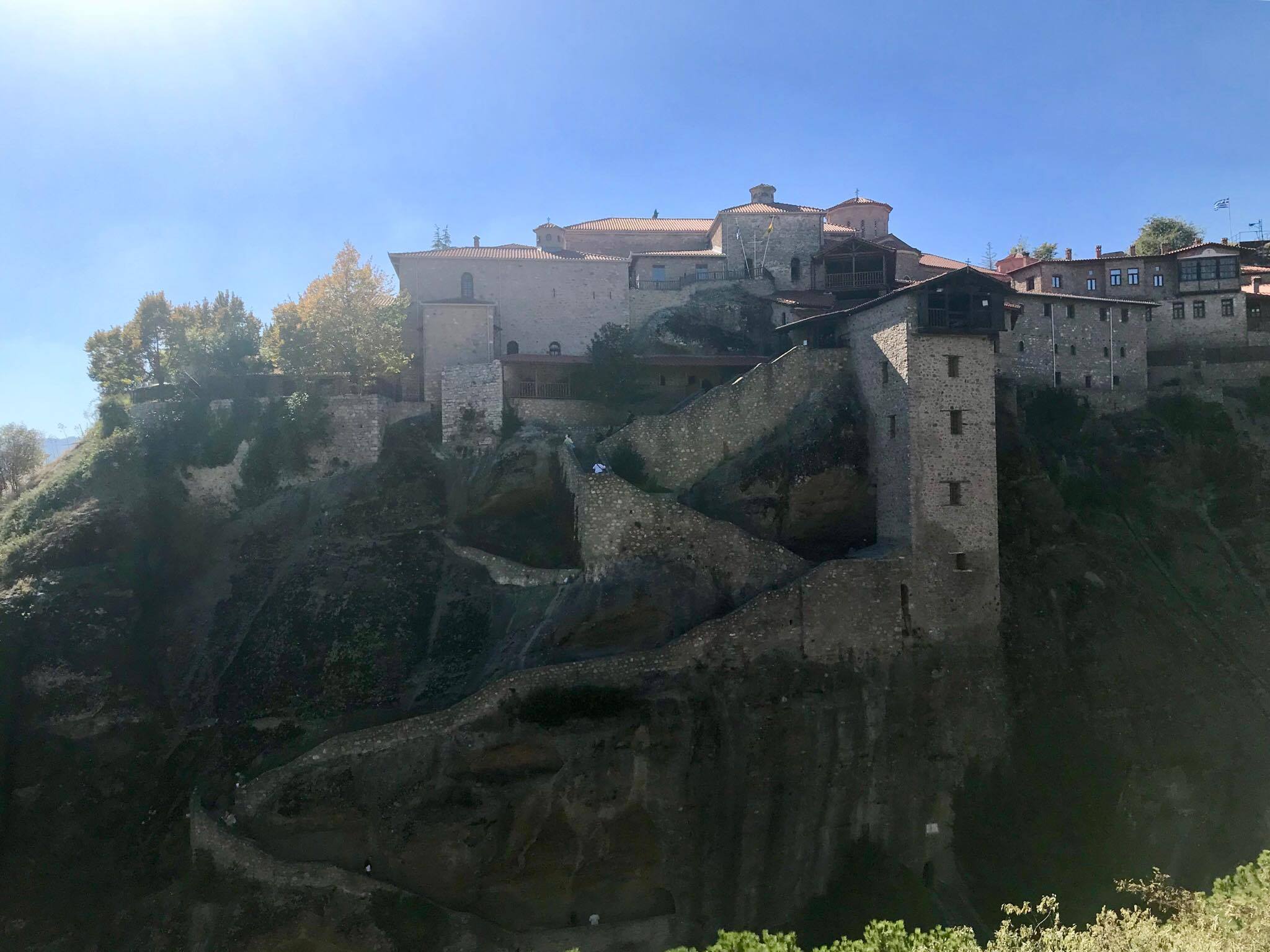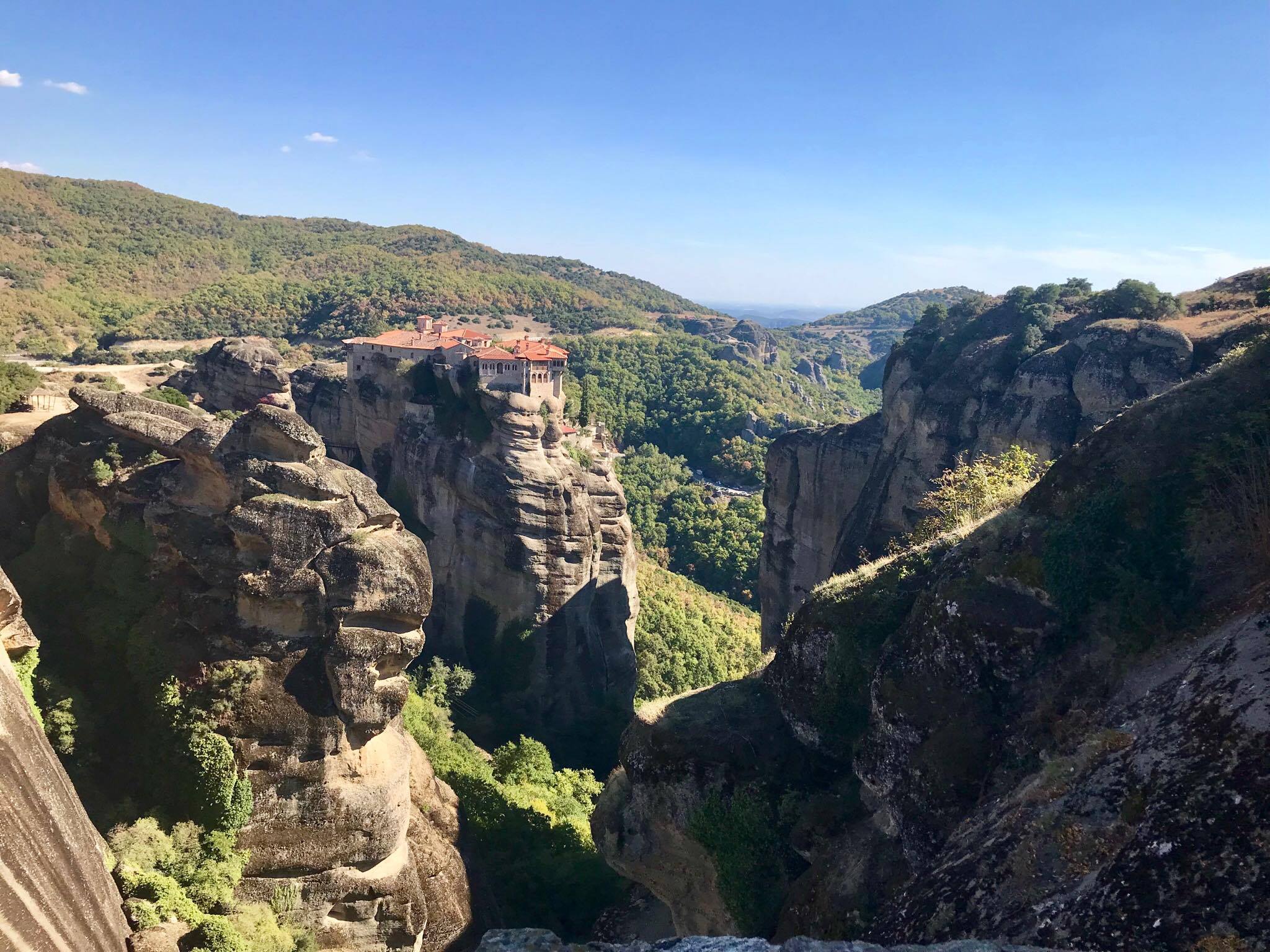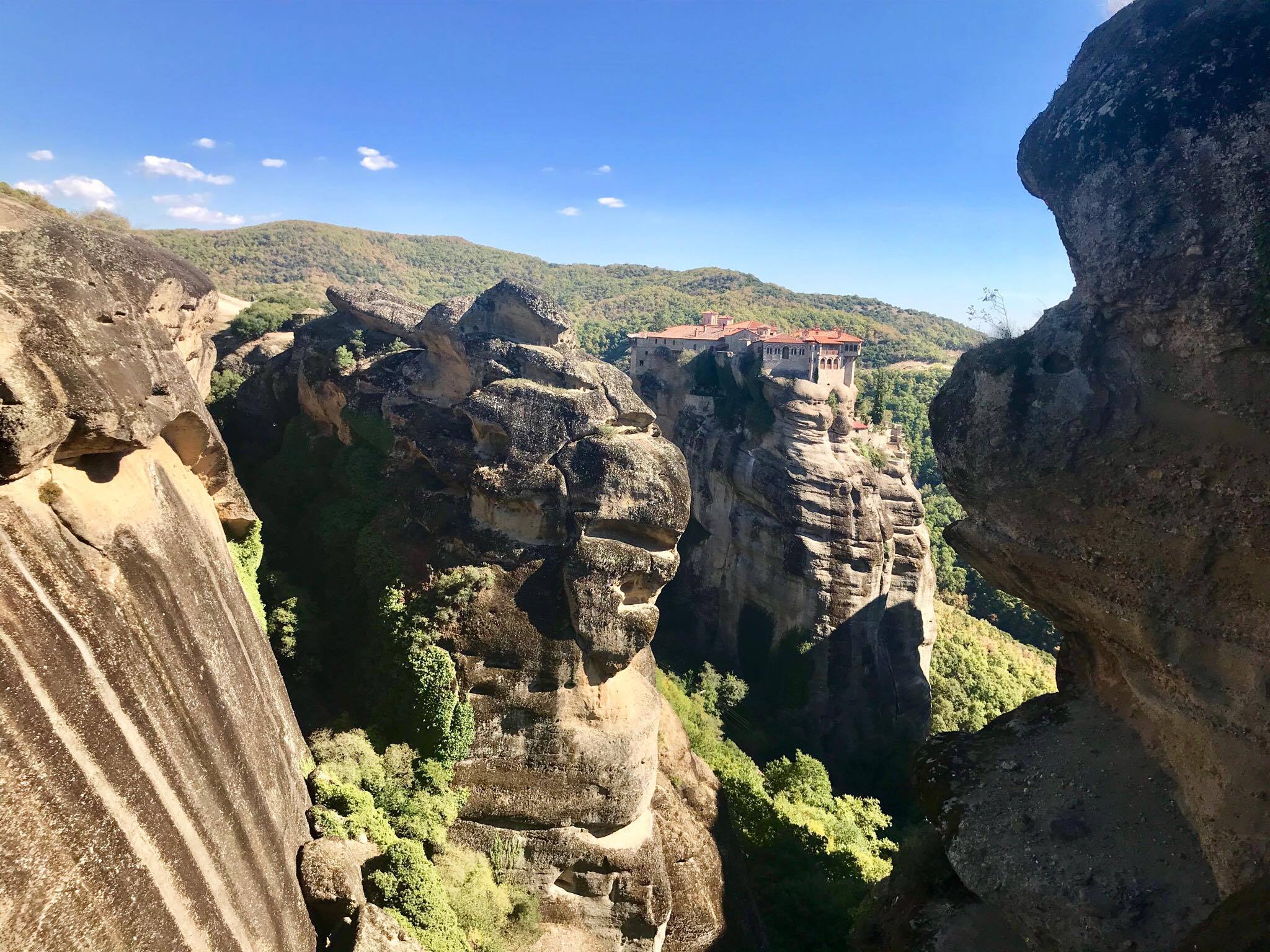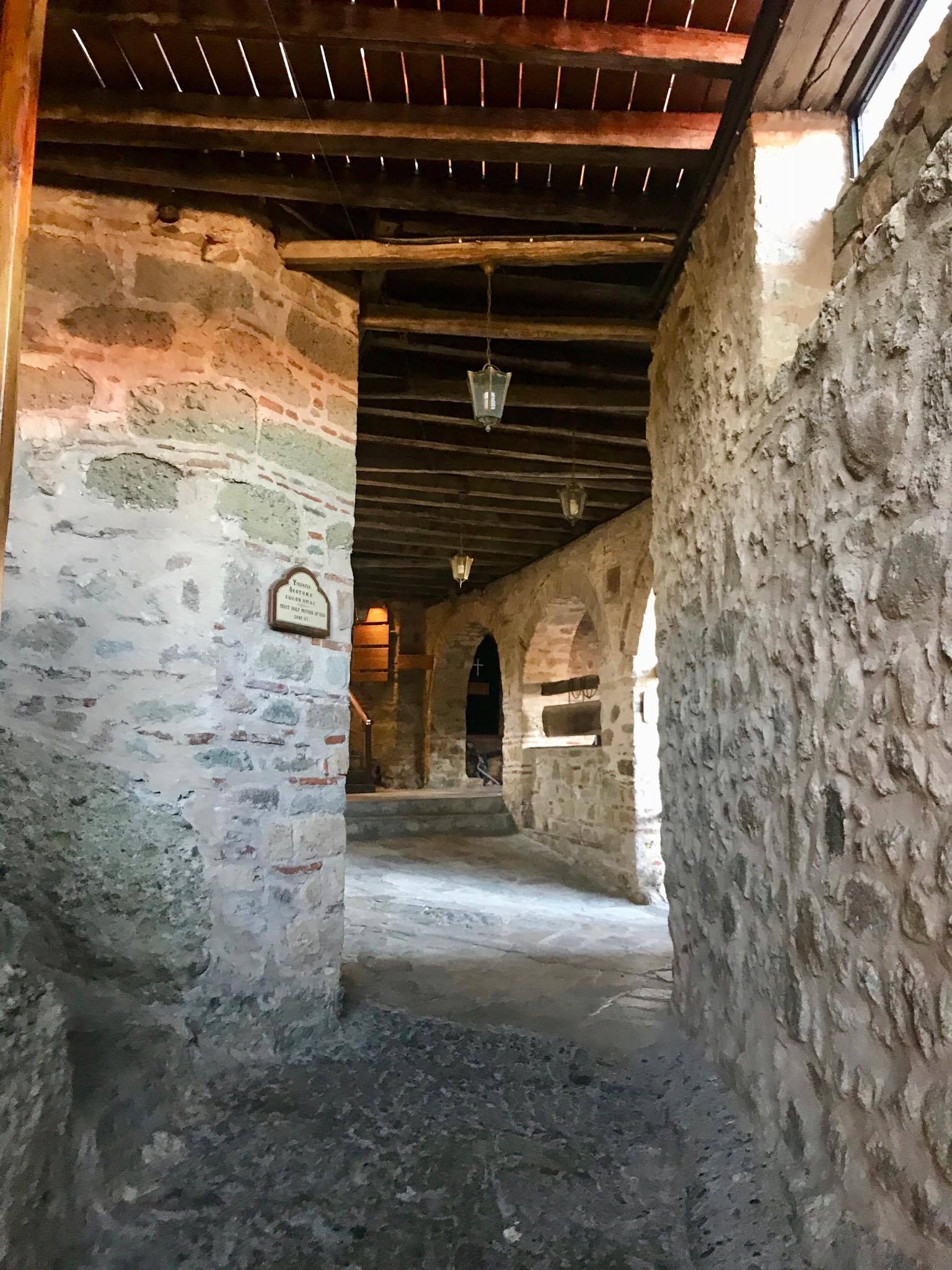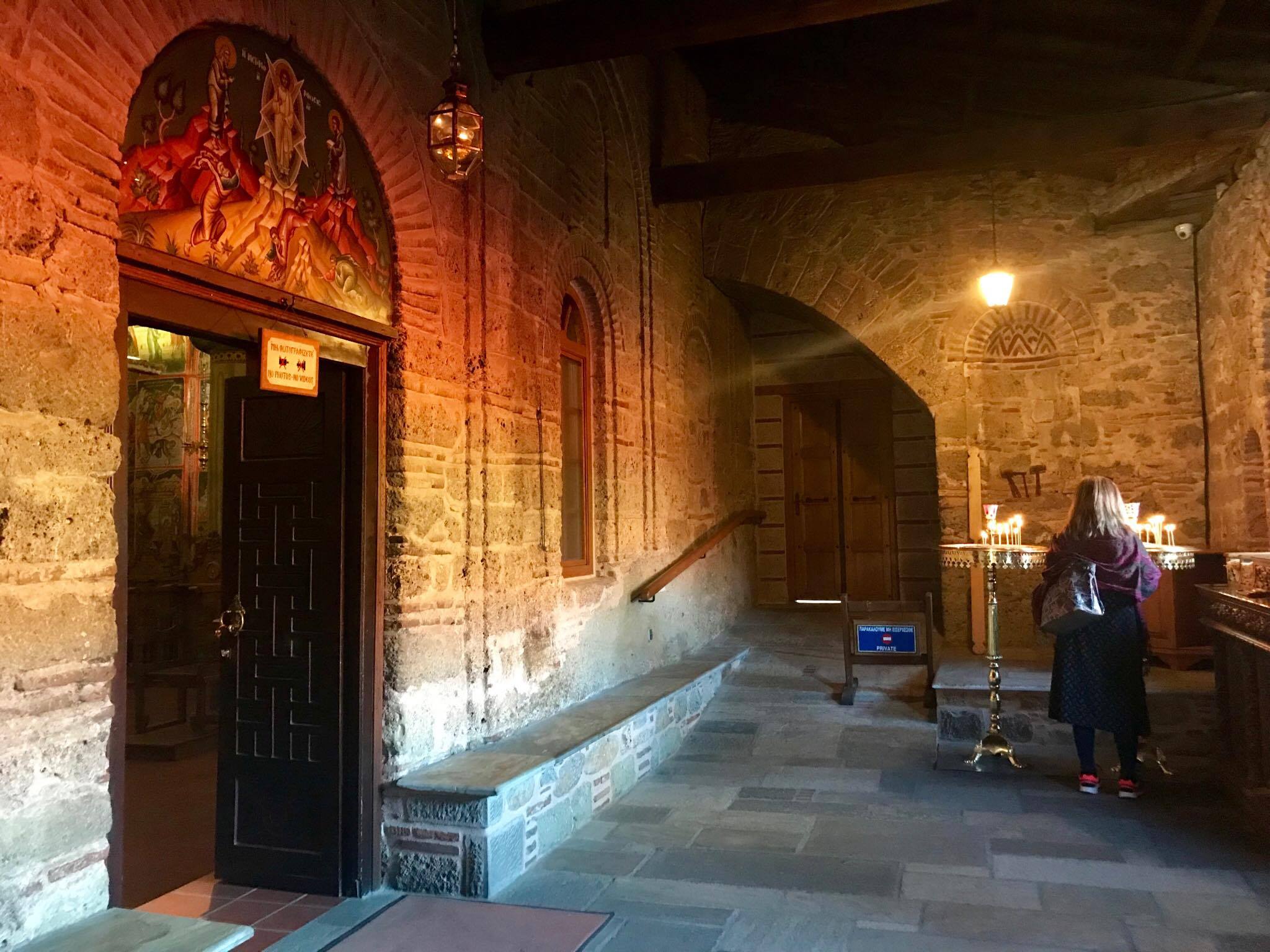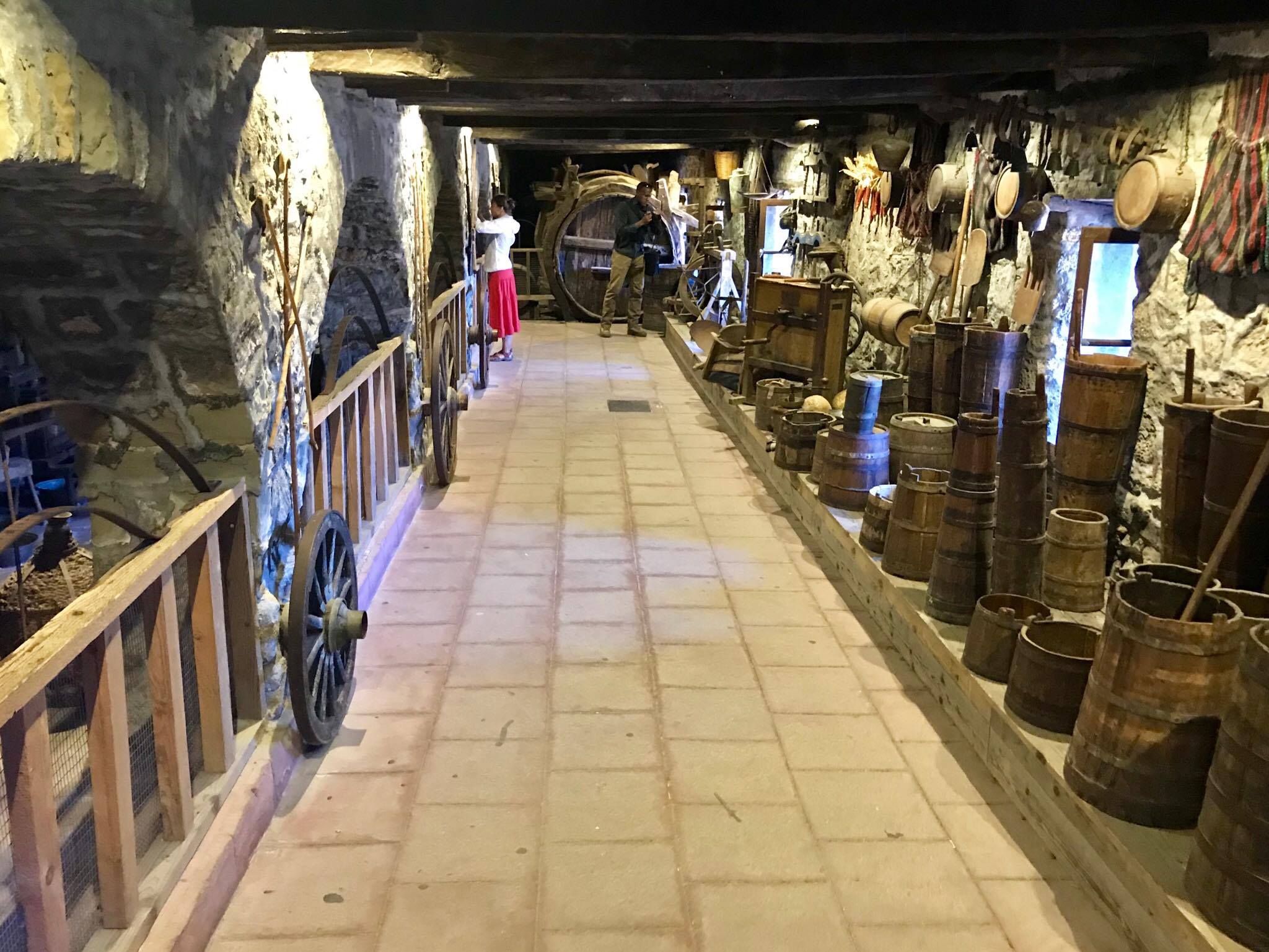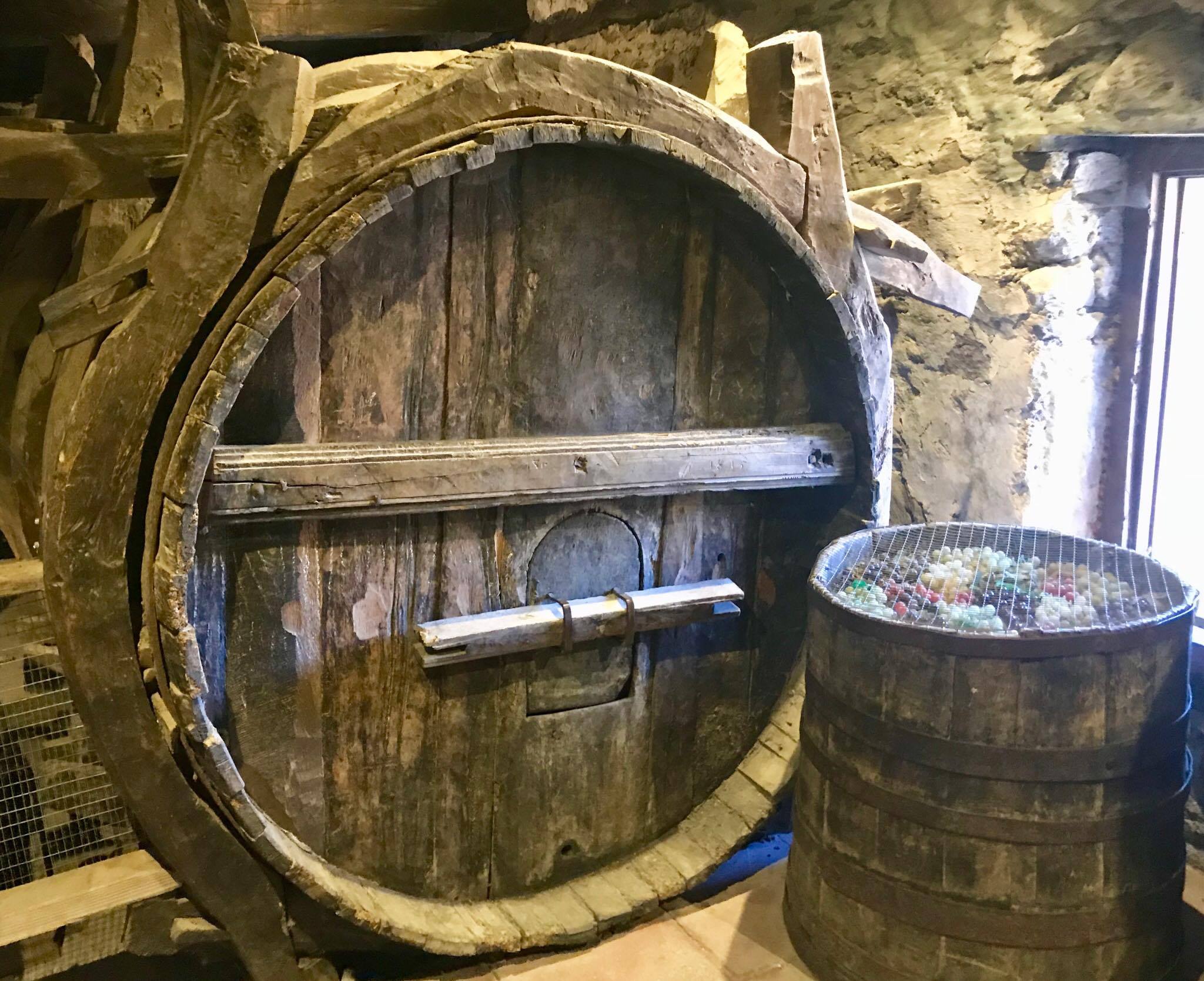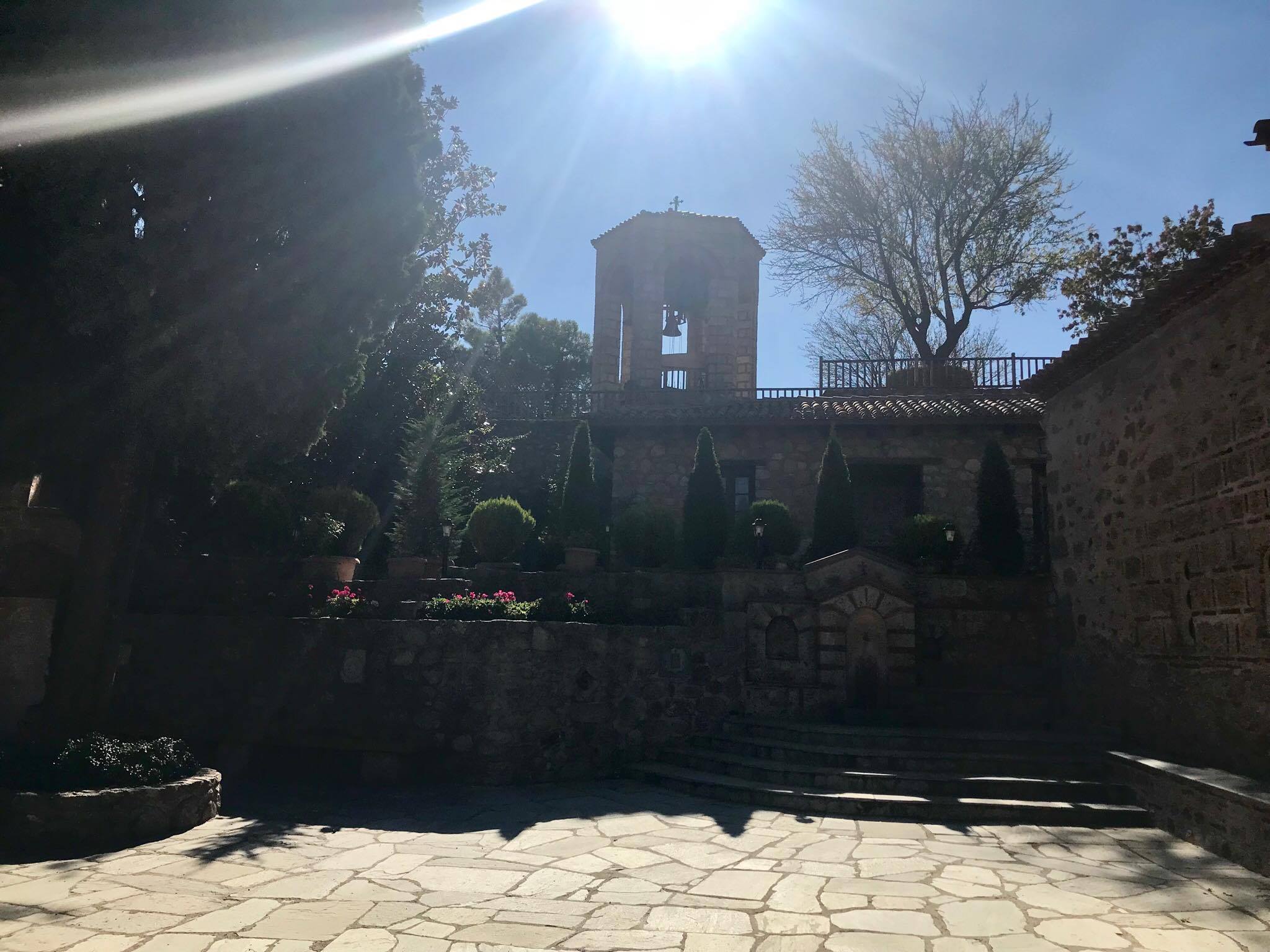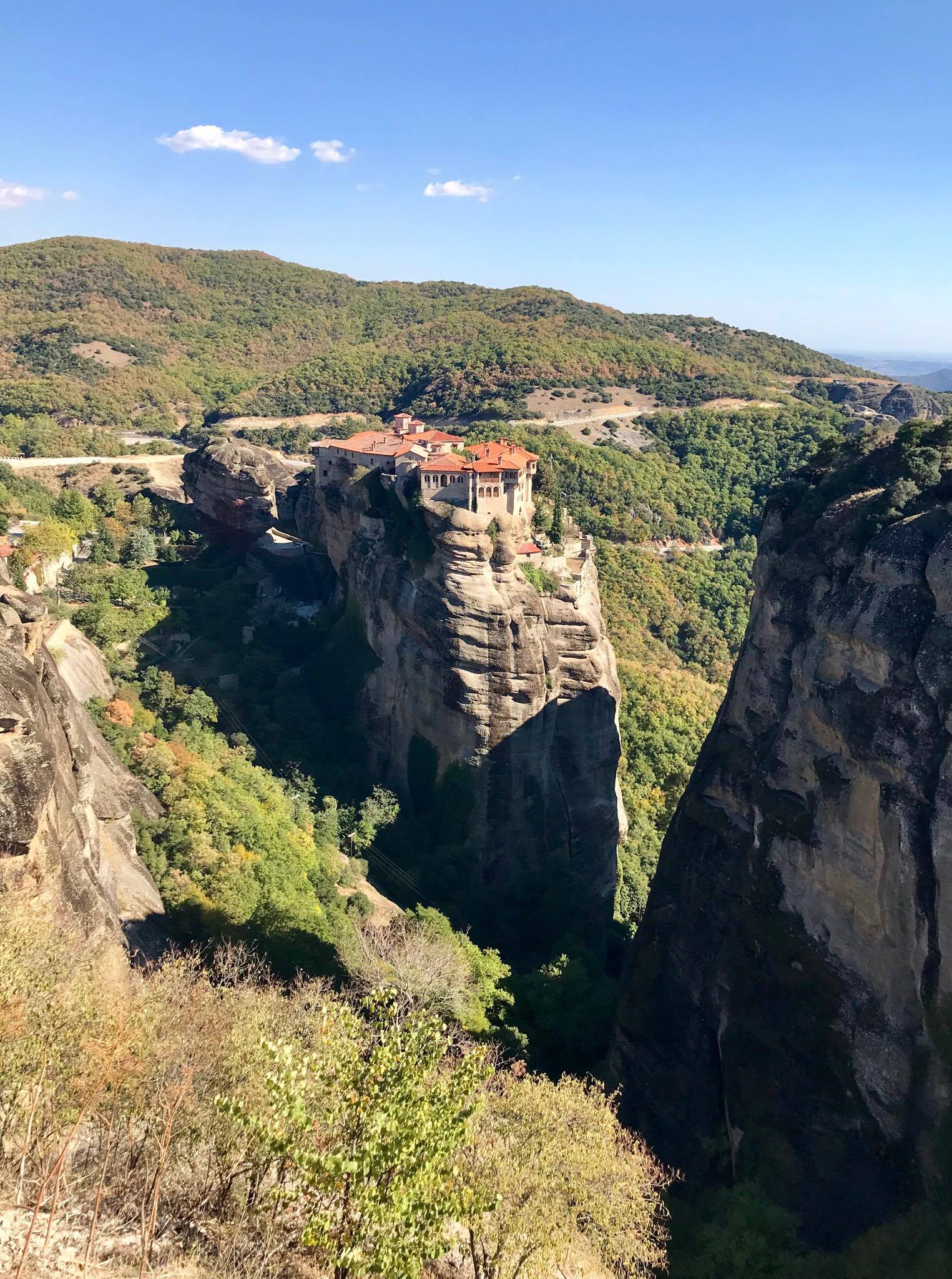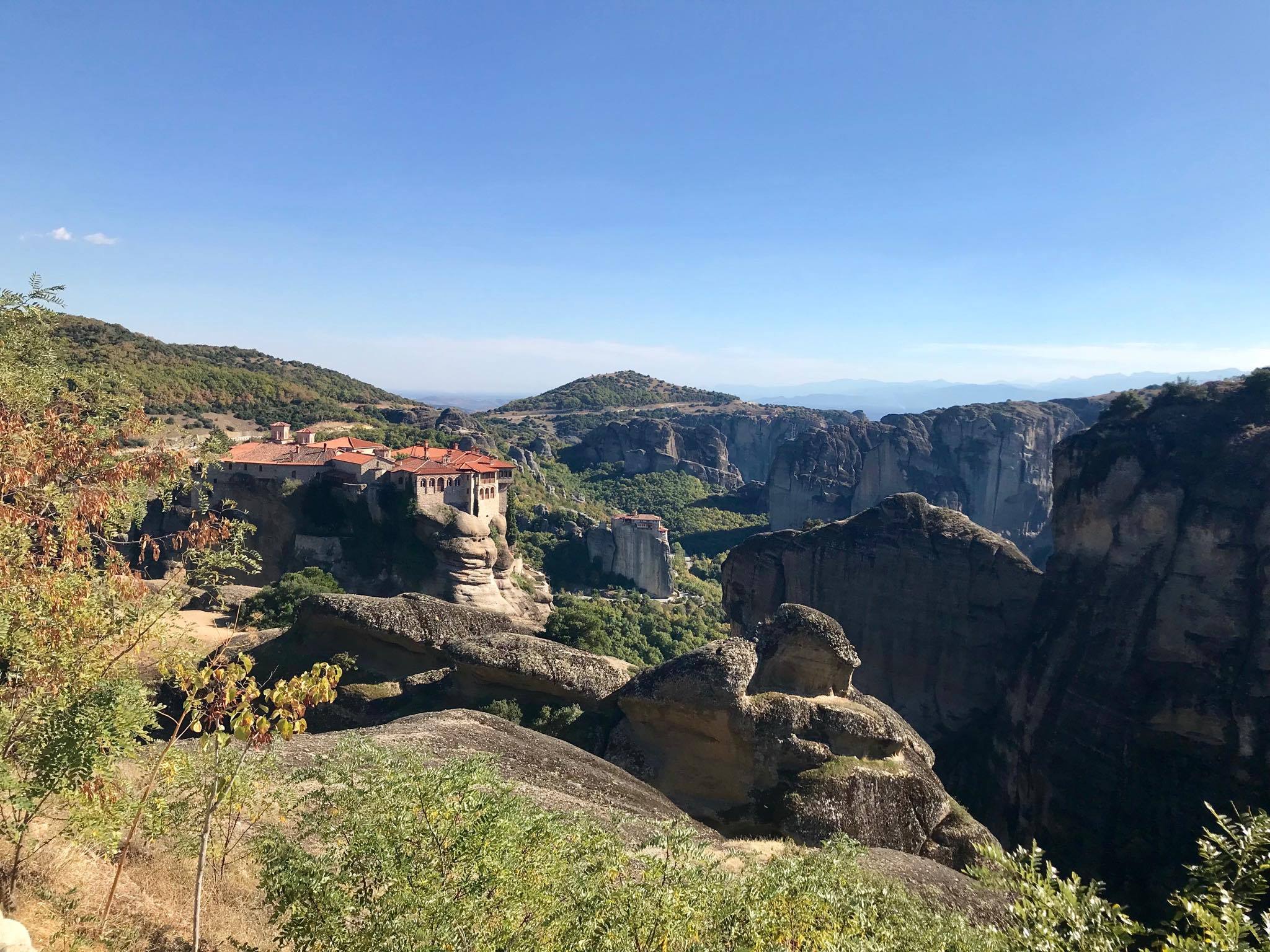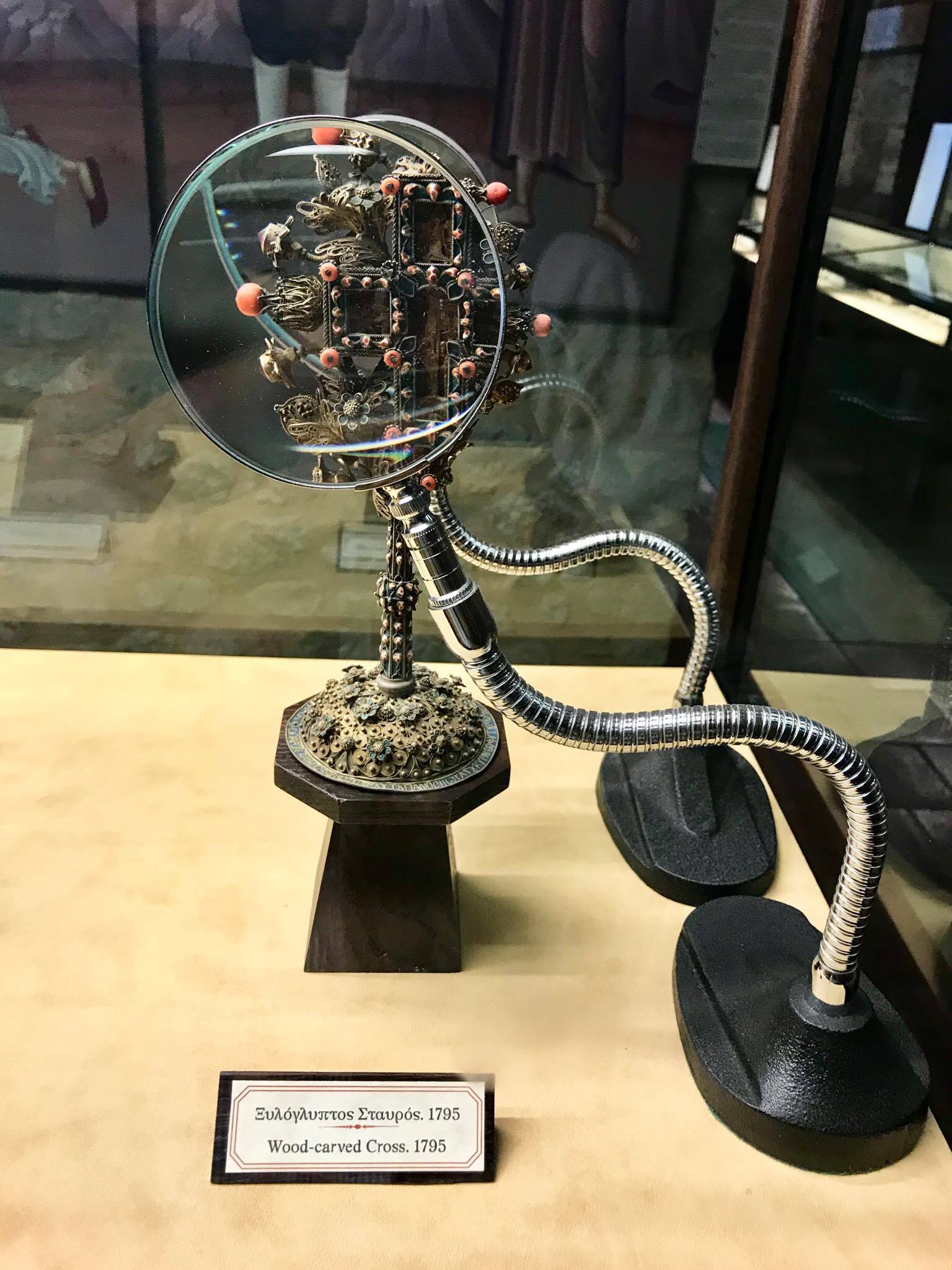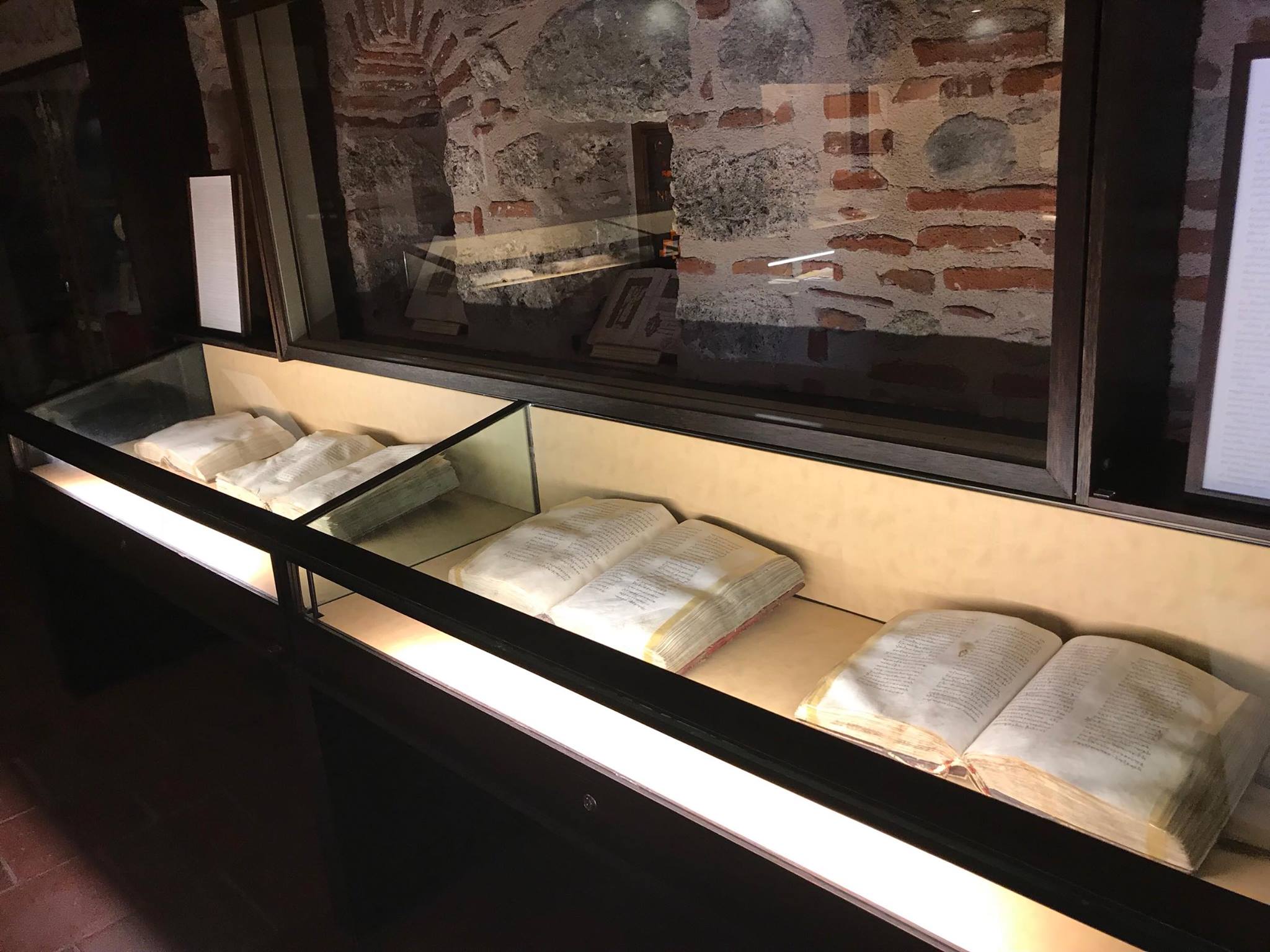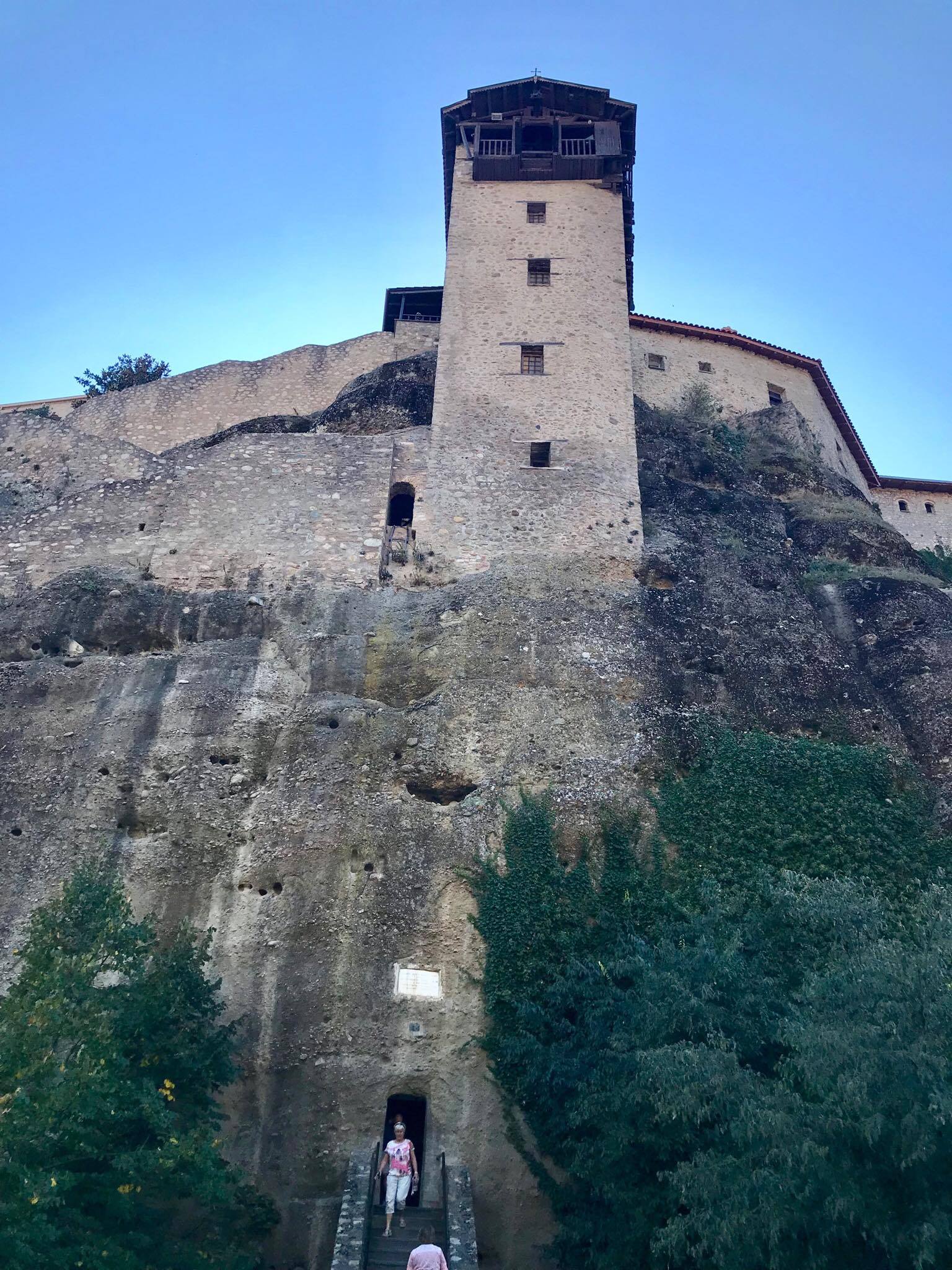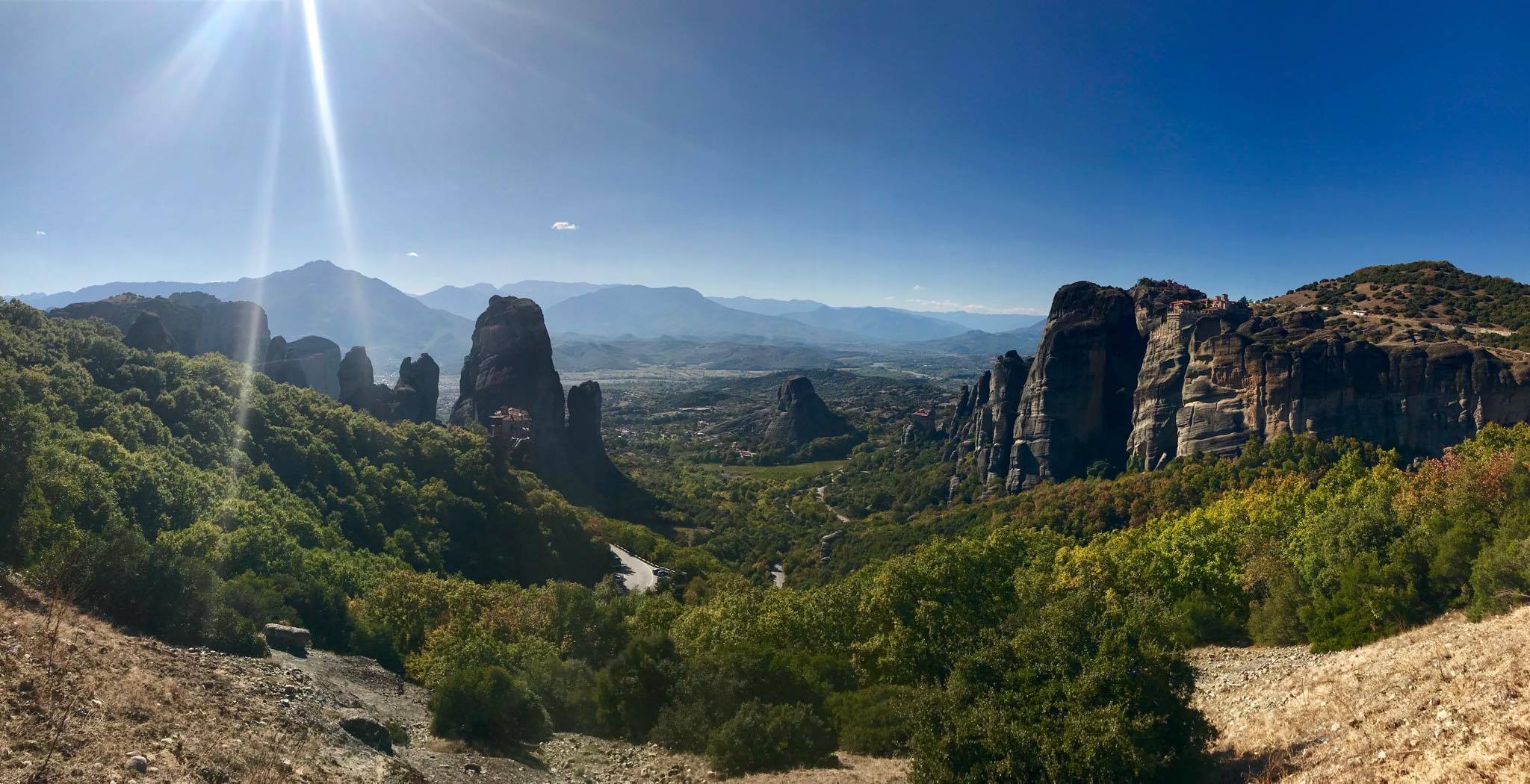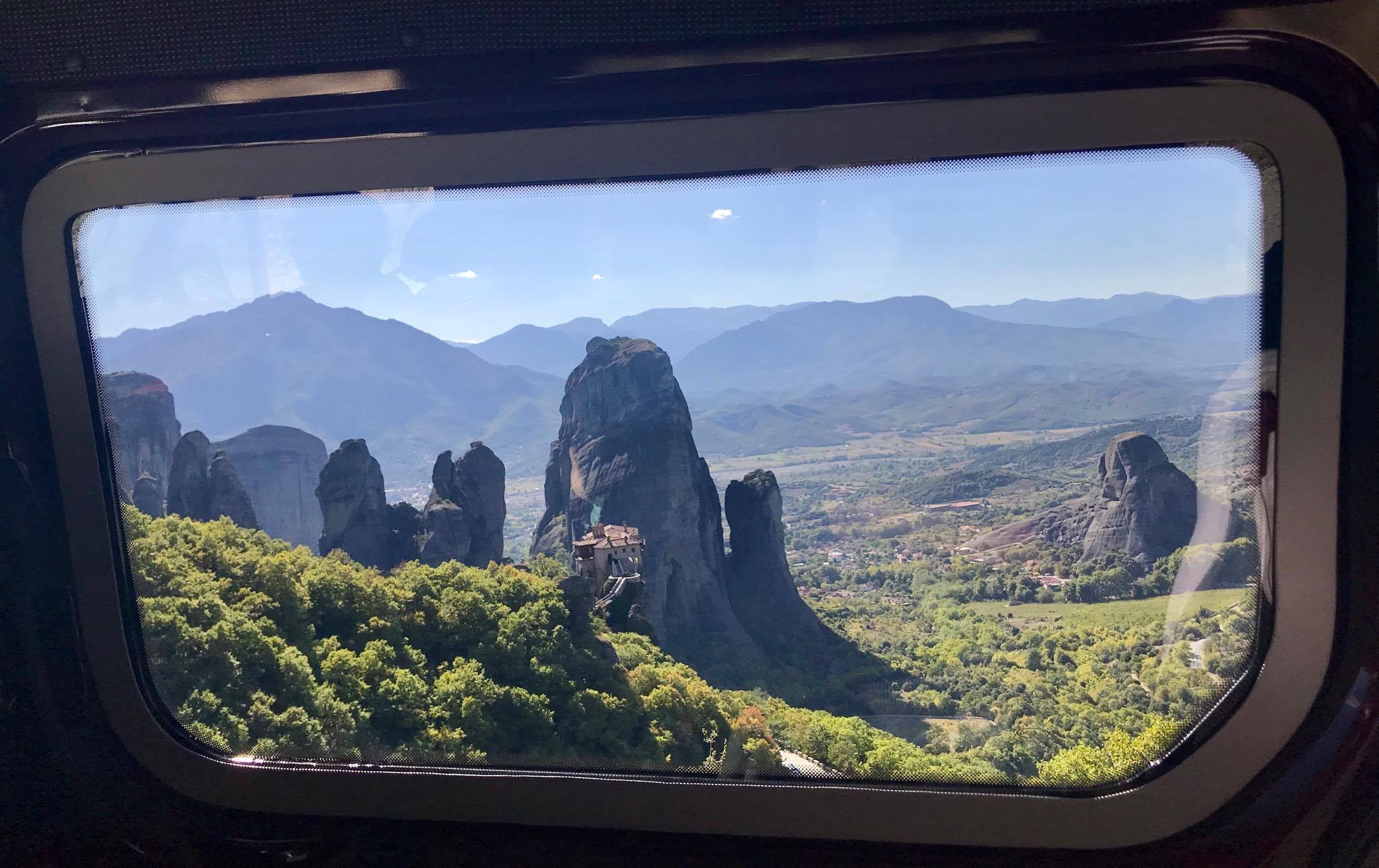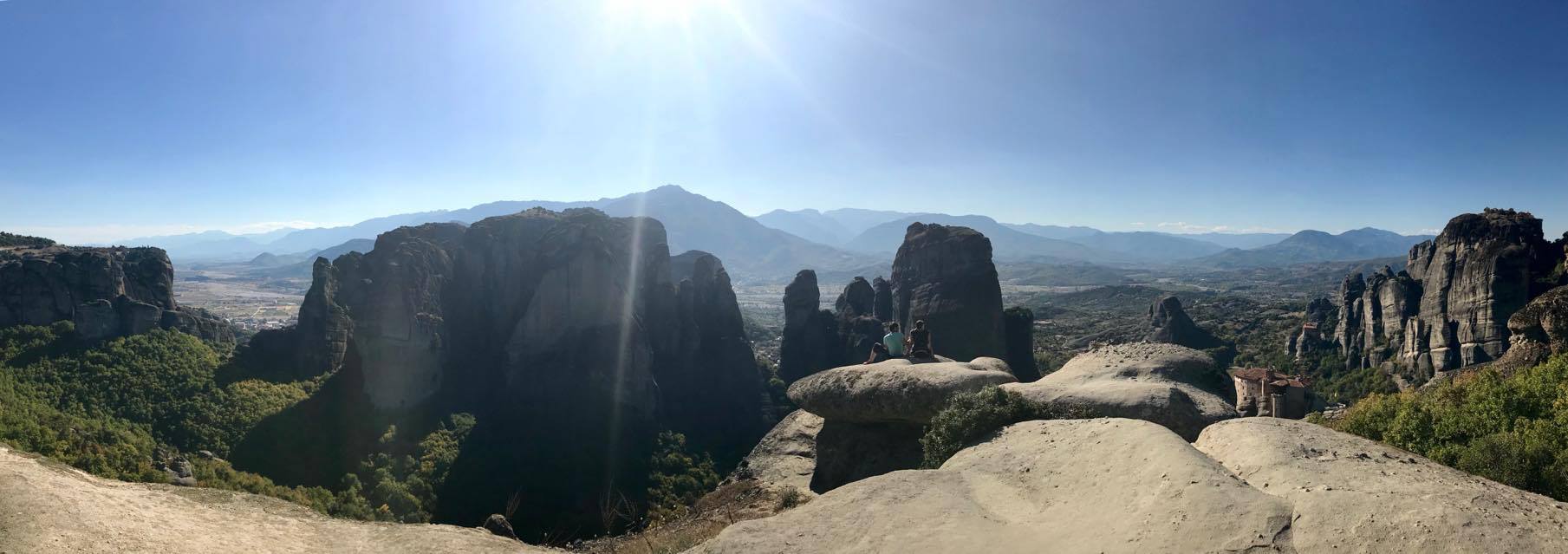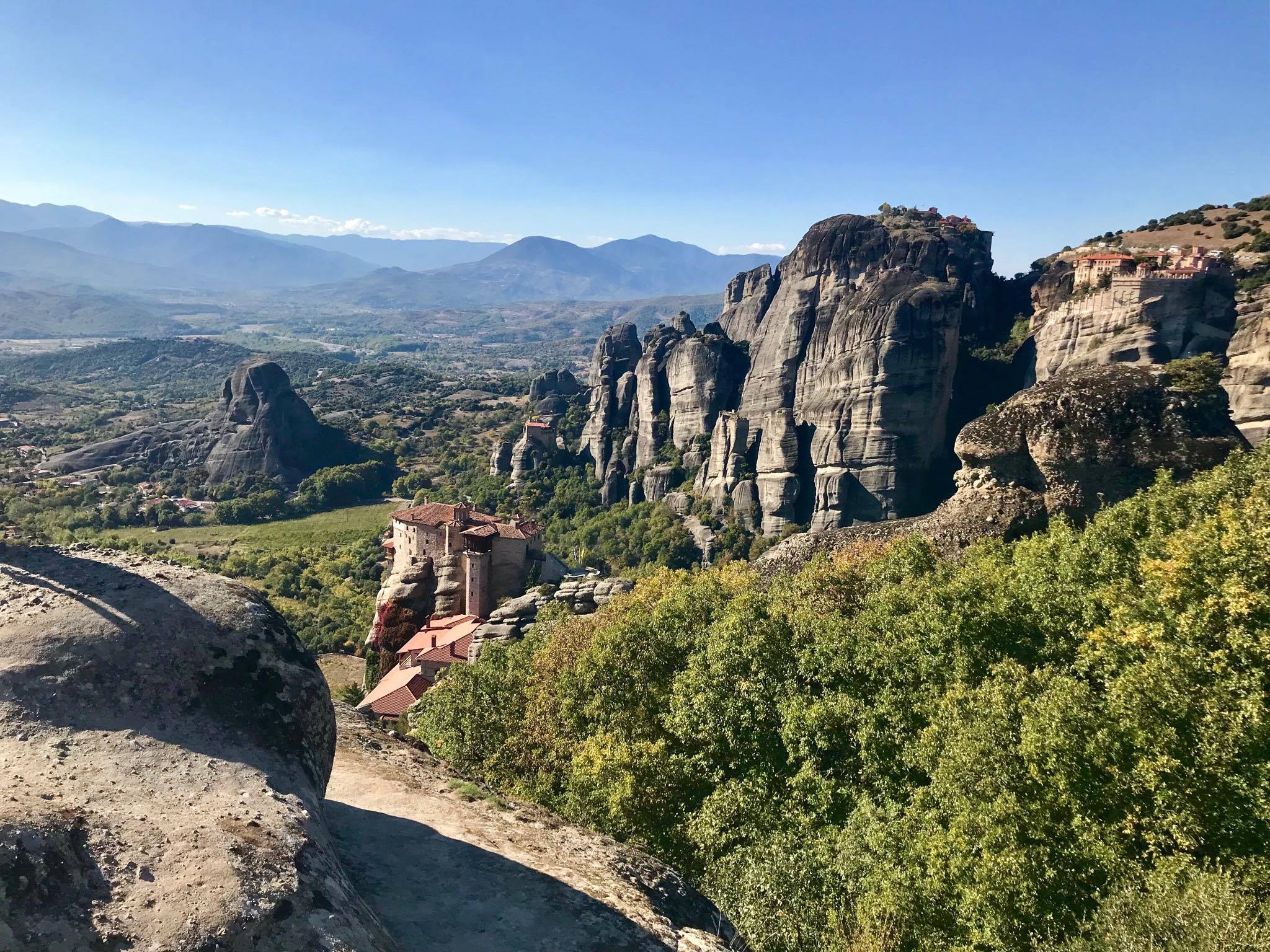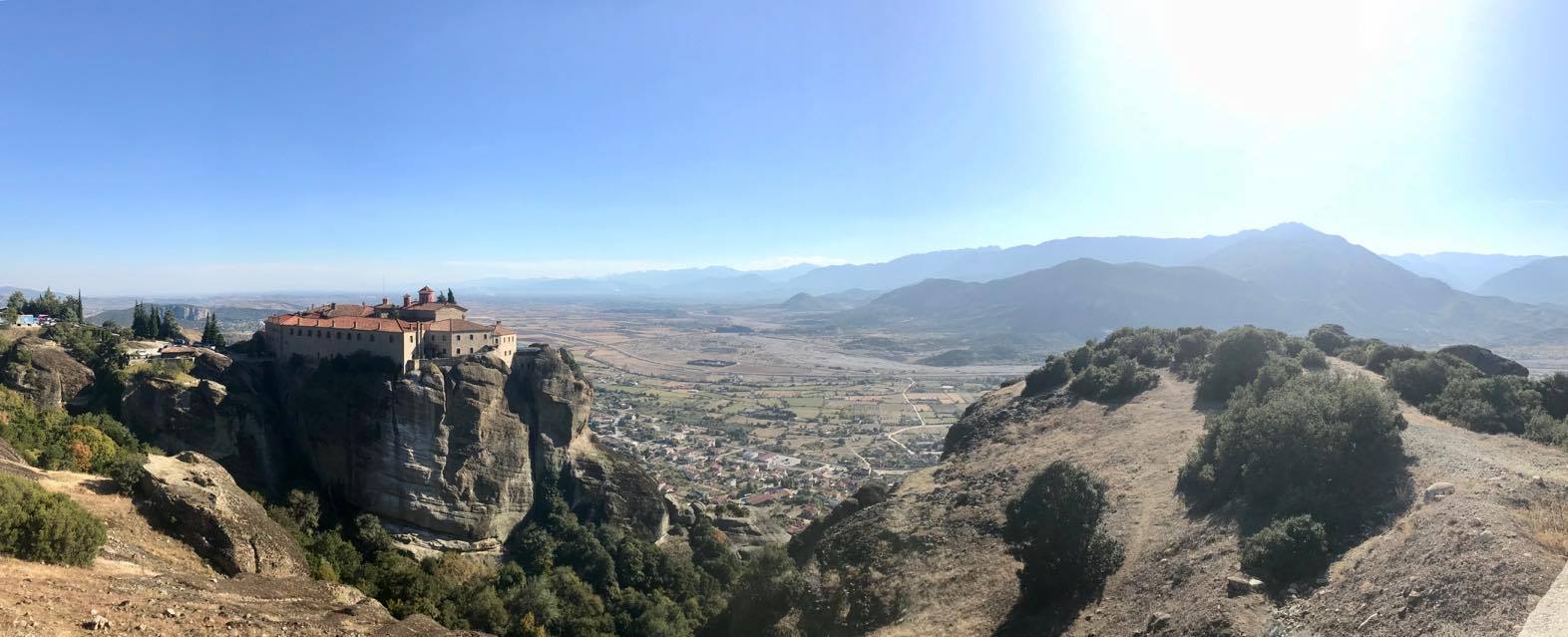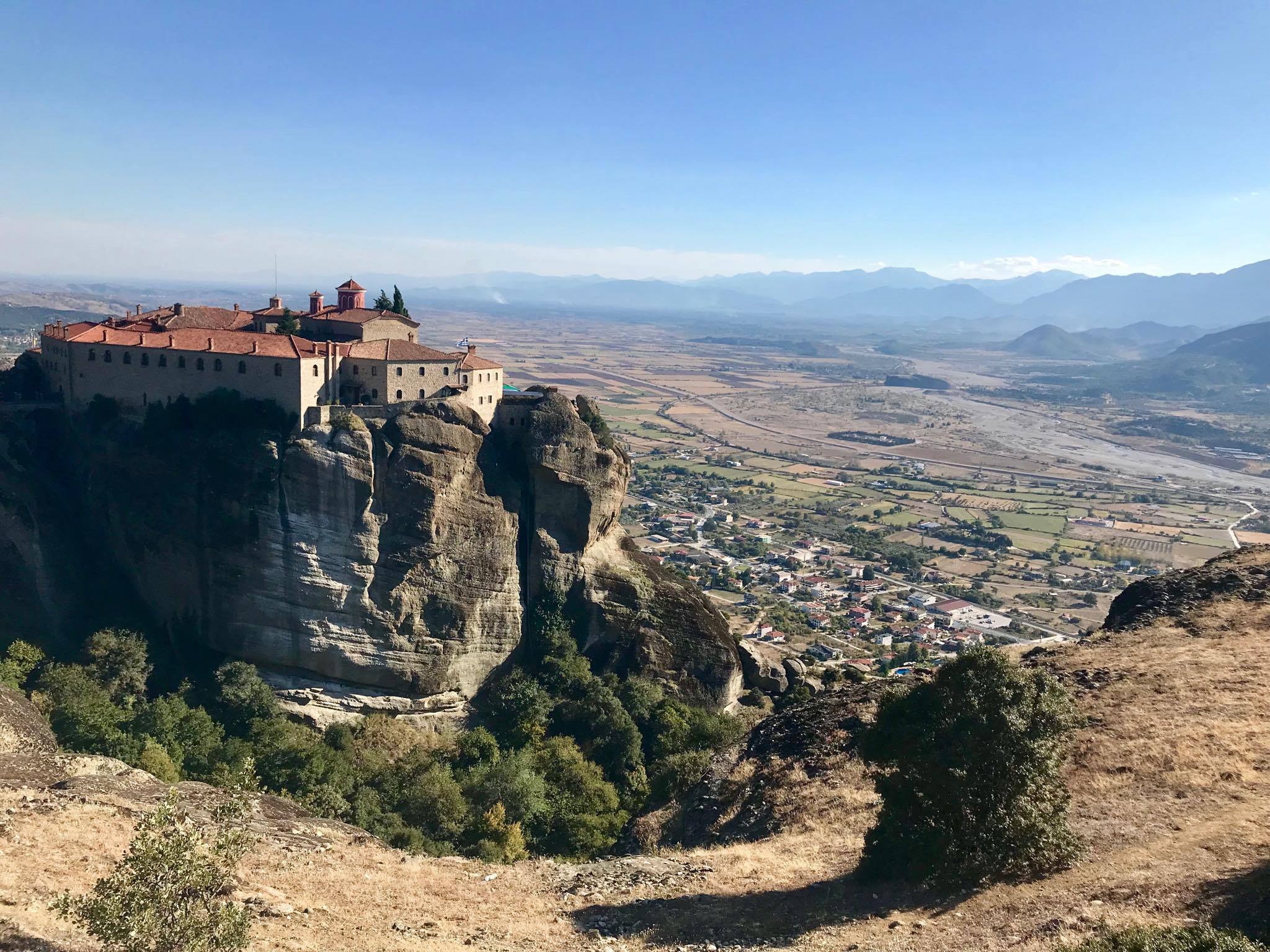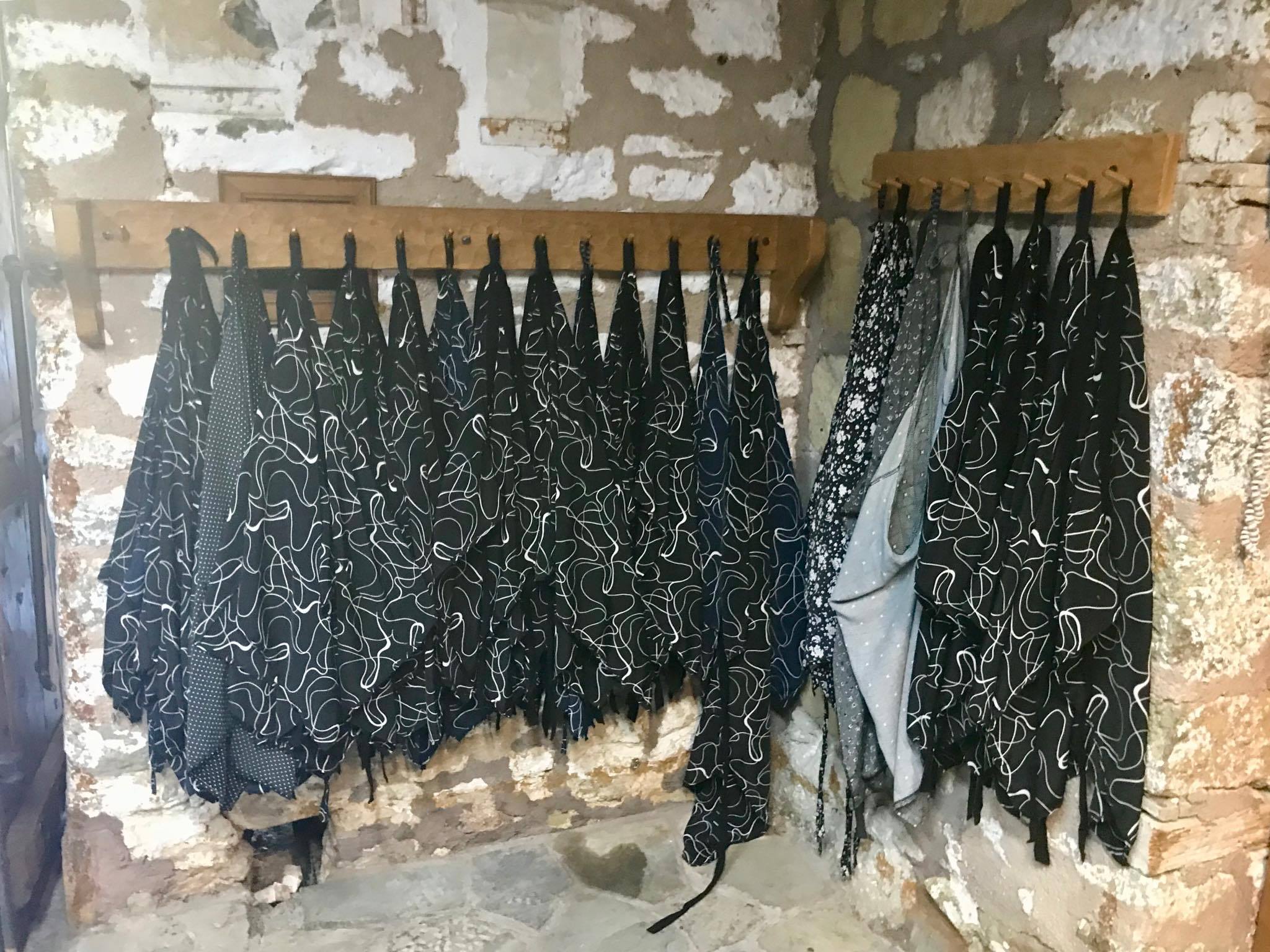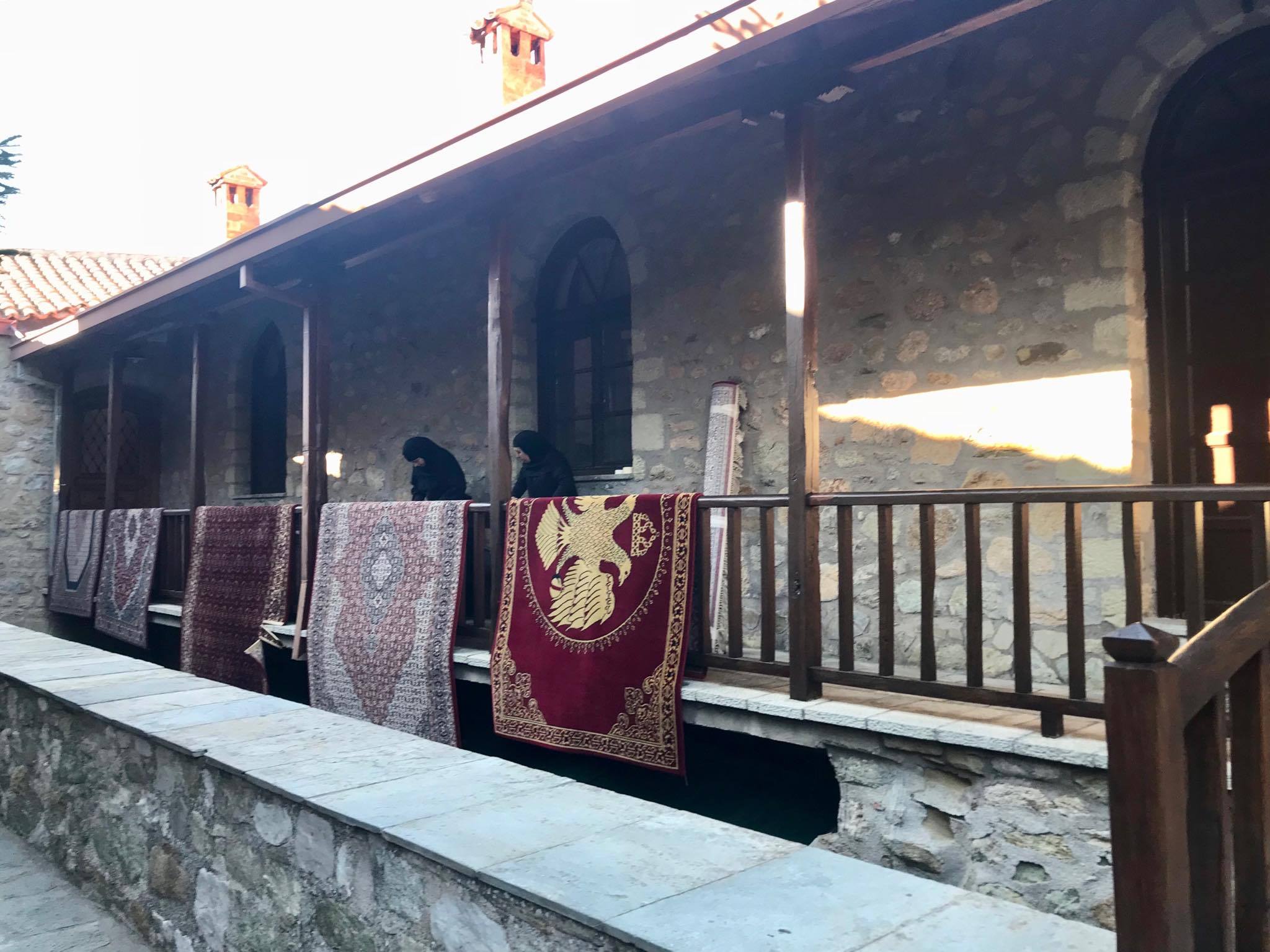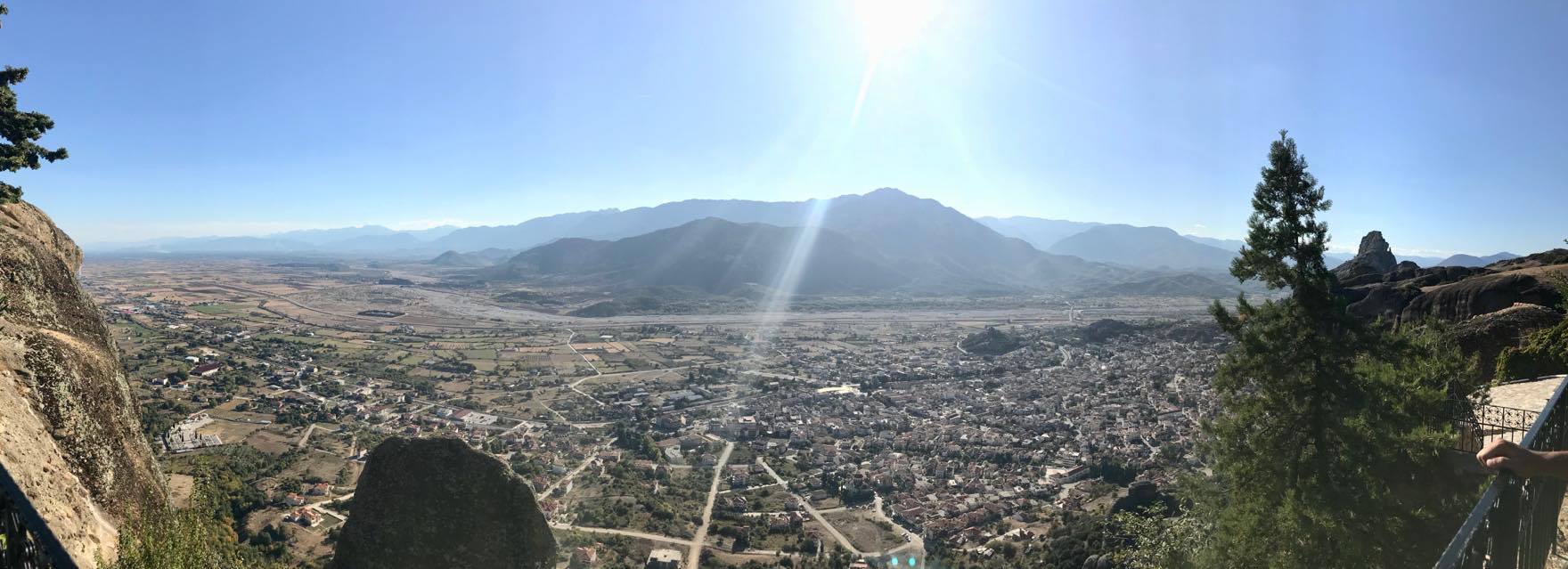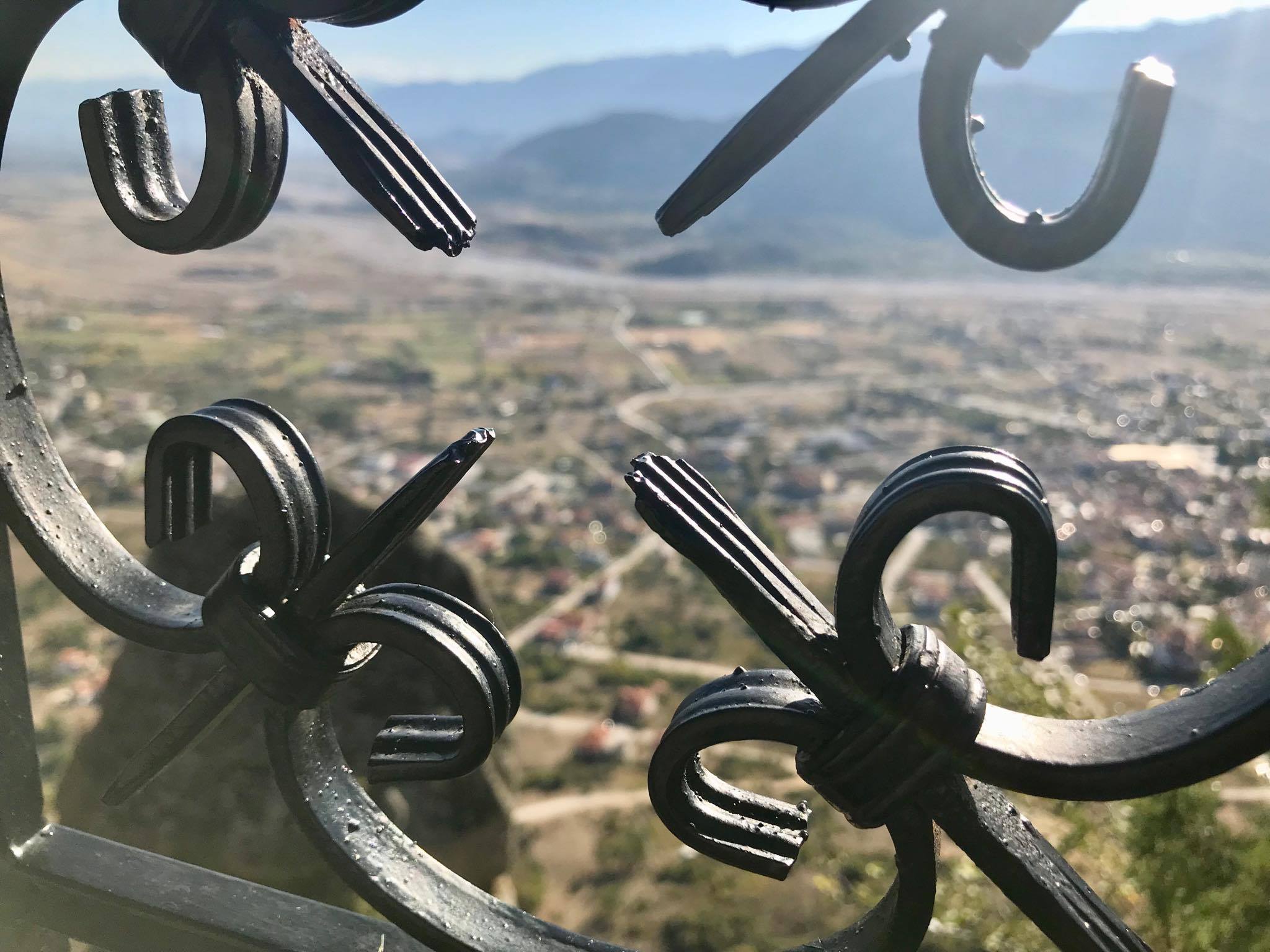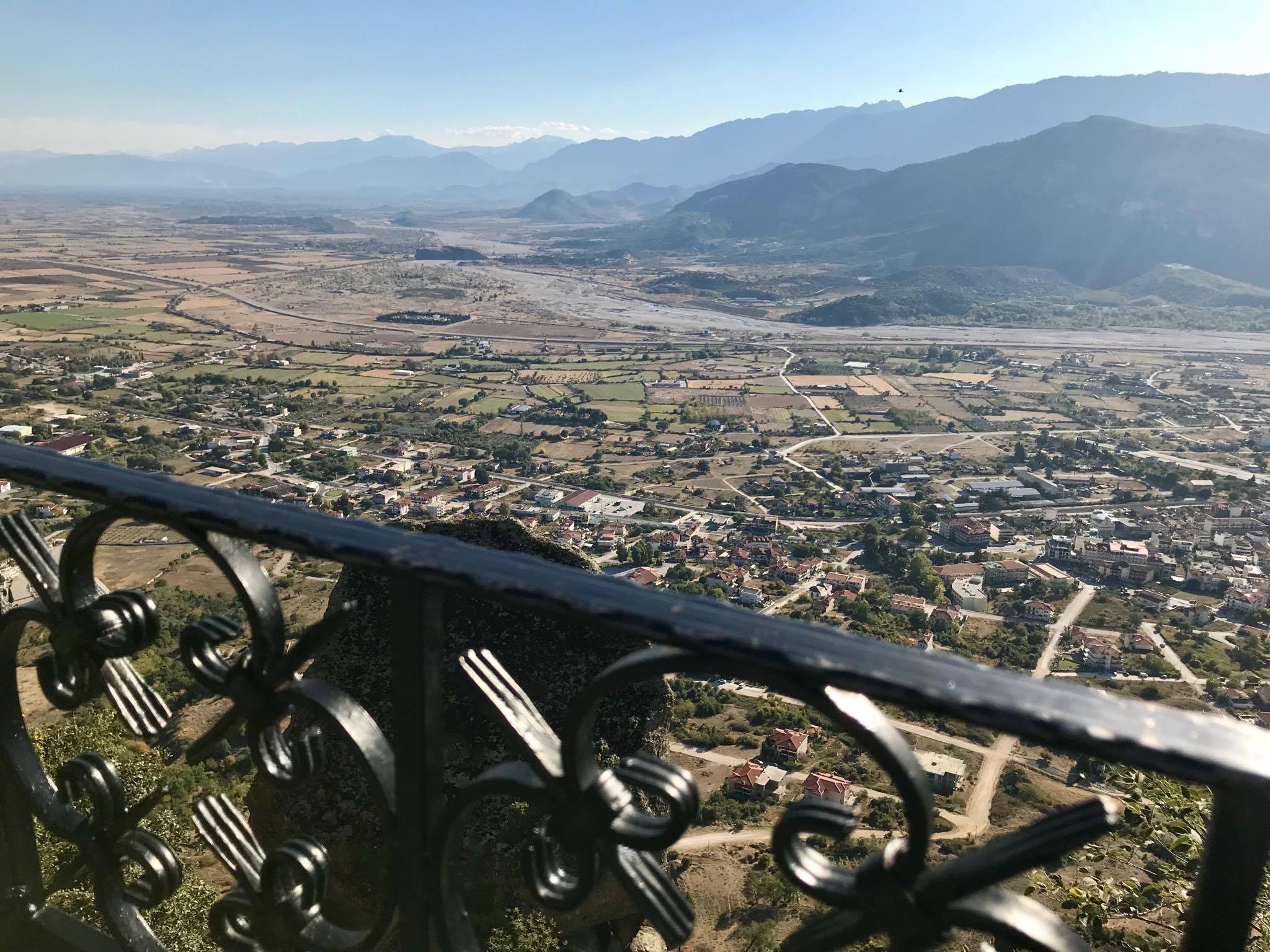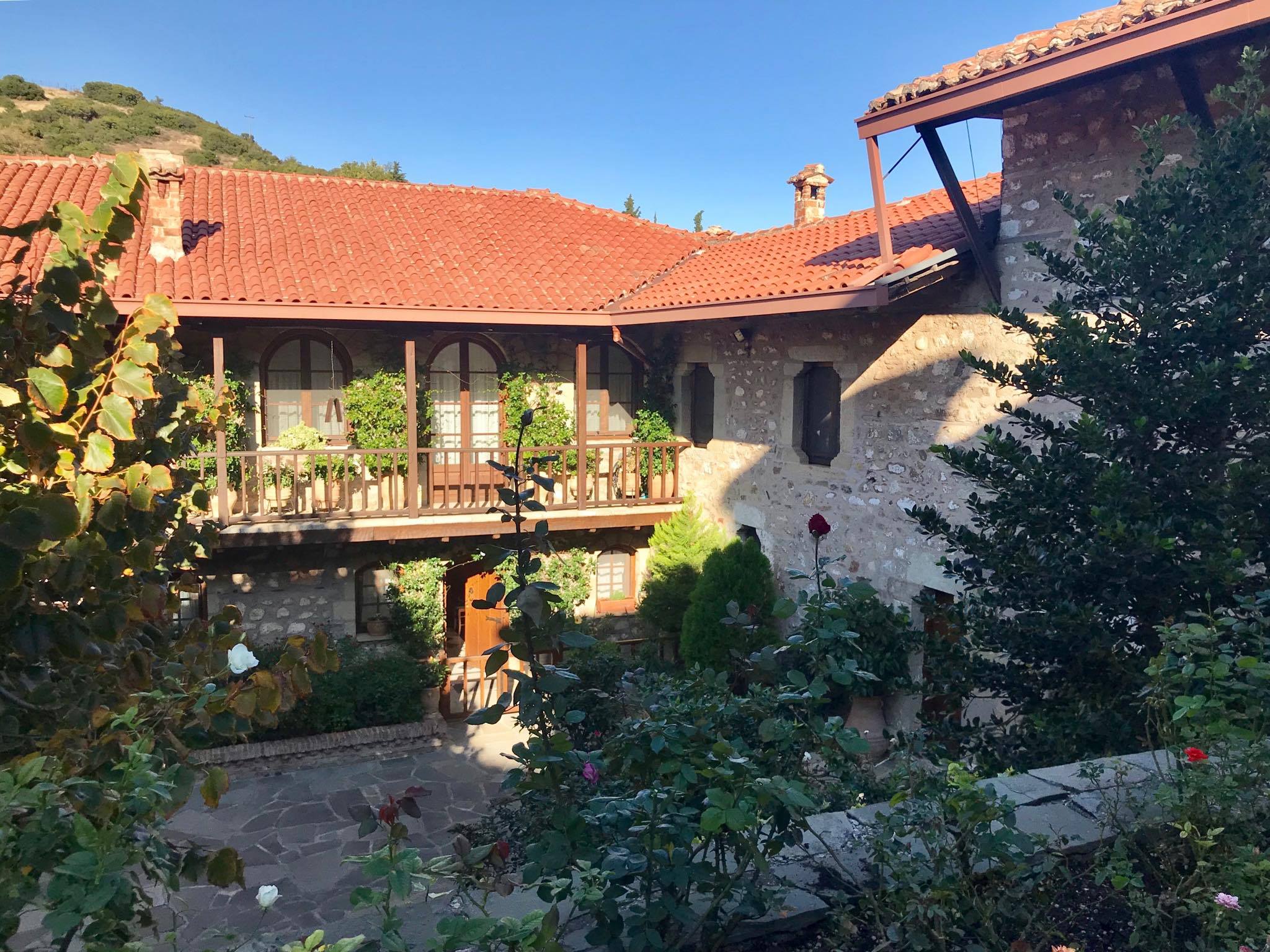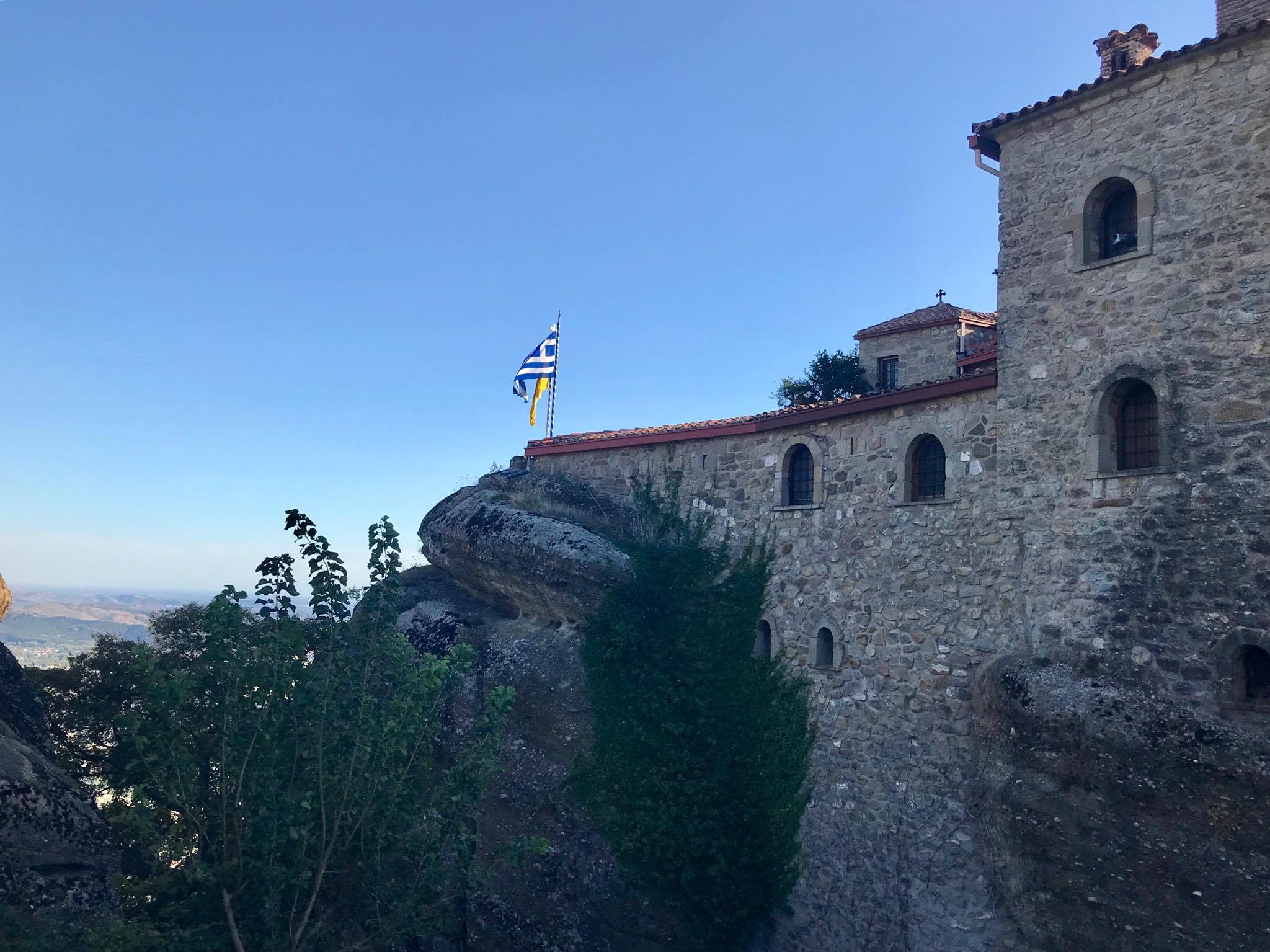Though Meteora is quite far from Athens, 5 hours by train to be exact, in my opinion its more than a worthwhile trip. If one has time, perhaps a two day trip would lessen the strain of the 10 hour train ride to and from the mountainous region. In two days, one could fit in a visit to Delphi, a UNESCO World Heritage site and also home to the ruins of ancient Temple of Apollo.
Meteora actually refers to the rock formations upon many of the Eastern Orthodox monasteries were built hundreds of years ago. Trains to the area run to the town of Kalambaka, which for our train from Athens, was the final stop.
Though evidence suggests that the region of Meteora was inhabited as early as 50,000 years ago, the earliest monasteries were not constructed until the 14th century.
The dwellings were erected on such precipitous and steep slopes to aid in the monks' escape from Turkish persecution.
However, presence of monks in the region dates back to as early as the 9th century A.D. The very first ascetic, hermit monks dwelled in naturally occurring fissures and hollows found in the mountainside. The difficulty and danger of access helped the monks maintain their secluded lifestyle.
Though once home to 24 monasteries, today only 6 remain open. Of the 6, many are only inhibited by one monk, while others have been converted to house nuns.
Our first stop was the Great Meteoron Monastery, the oldest and largest monastery in operation at Meteora. Initially founded as a humble abode in the 1300s by a scholarly monk from Mount Athos, today the monastery houses the famed Church of the Transfiguration.
The monastery is a slight climb to access, but steps carved into the mountainside make the climb possible, if slightly arduous. One can enjoy a clear view of the Holy Trinity Monastery via the ascending stairs.
The inside of the Great Meteoron monastery. There is an original sacristy containing the skull and remains of many monks who resided here visitors are able to view. No photos out of respect, but nothing like I've ever seen.
A kitchen, with the walls blackened from smoke and the preserved bread-oven and soup hearth.
The wine cellar, with the large wooden barrel at one end presumably for wine, once upon a time.
A shaded court-yard provides a much needed rest, and some spectacular views of the mountainside.
From the Great Meteoron one can clearly see the neighboring monastery of Ypselotera, its name fittingly meaning 'highest of the heavens.' This monastery has no longer habited since the 17th century, perhaps a result of the difficulty of access.
This stately and sizeable monastery has many artifacts in its museum. Certain ornaments are particularly intricate. and the exhibit also houses many ancient religious texts and scrolls in its original form.
One leaves the monastery via the same path, through the small opening in the rock seen below. The tower used to be have a rope and pulley system to facilitate transport of goods up to the monastery.
Picturesque vantage points abound in Meteora. This one is of particular note, as the show Game of Thrones captured this view for one of its scenes. They replaced the monasteries in the distance with a castle, apparently because deseeminating films of the monasteries requires permission from Greece's Ministry of Culture. Red tape: 1, HBO: 0.
The way these mountains rise out of the ground like fingers reminds me of a particular region in China known as ZhangJiaJie. Though I was there more than a decade ago, I still remember the steep cliffs, shooting out of the Earth with such vertical intensity as if determined to reach the sky.
This lookout point features flat rocks for to walk out onto. Locally, it may be known as Sunset Rock, though there are many areas around Meteora that feature similar formations.
Mine was a day-trip, but such beauty definitely deserves two or more days if one has the time to spare.
One can't help but to venture closer to the scenery. But maybe not too close.
The second (and last) monastery we visited was St. Stephen's, seen here in the distance:
Founded in the early 12th century, this monastery is the easiest to access via a small draw bridge.
A note on clothing: to enter the monasteries women should not wear sleeveless clothing, and those wearing pants have to put on a wrap dress, seen below, to mimic a dress. This is because Orthodox women don't wear pants, and visitors should show the same respect when touring.
Two nuns that now inhabit the St. Stephen's Monastery.
The panoramic view from the patio at the monastery. On a clear day, one feels as if they can seen all the way to Mt. Olympus (which isn't very far from this region).
Despite the seemingly limited space these monasteries on the rocks had, I was surprised to find that each had a courtyard of their own.
Greek flags are ever-present at various sights around the country, lest visitors forget where they are, perhaps?
All in all, an incredibly beautiful day spent wandering the monasteries of Meteora. Though 4 hours was not nearly enough time to spend in such a picturesque locale, if one only has a day to spare and can take the long train rides to and from the region, this is a top choice destination for a day-trip outside of Athens.



